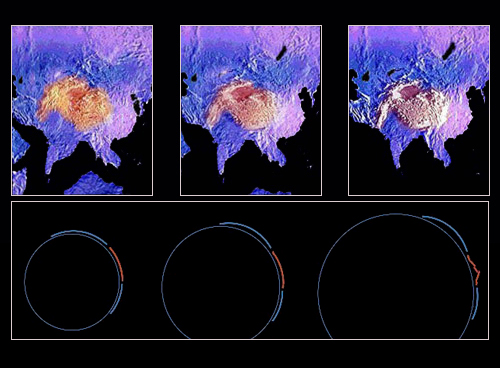| I believe the
Himalayas were originally the seabeds created by the fresh molten
basaltic material that welled up from the mantle to fill the original
hole in the Indian plate.
The Indian sub-continent has a major compressional
border, as it pushed upwards into the larger continental plate.
In conventional Plate-tectonics it is believed that these compressional
fault lines exist between areas of the crust that have been moving
towards each other over large distances, or at the points where
huge ancient seafloors once existed but are now long subsumed back
into the mantle by subduction. Traditionally, India is believed
to have collided with Asia. But again, this is partly based on the
reconstruction of the continents on a constant diameter.
On an expanding sphere the dynamics of compression
and extension I believe would be quite different. The older stable
shield areas around them, rather than moving together over greater
distances, would remain in their relative original positions, but
would collapse back onto themselves to retain an equilibrium while
the sphere beneath them increases ( similar to 'isostatic rebound':
'ptss' ), thus creating
compressional boundaries between them, pushing them upwards and
buckling them into the huge fold mountain range.
|

